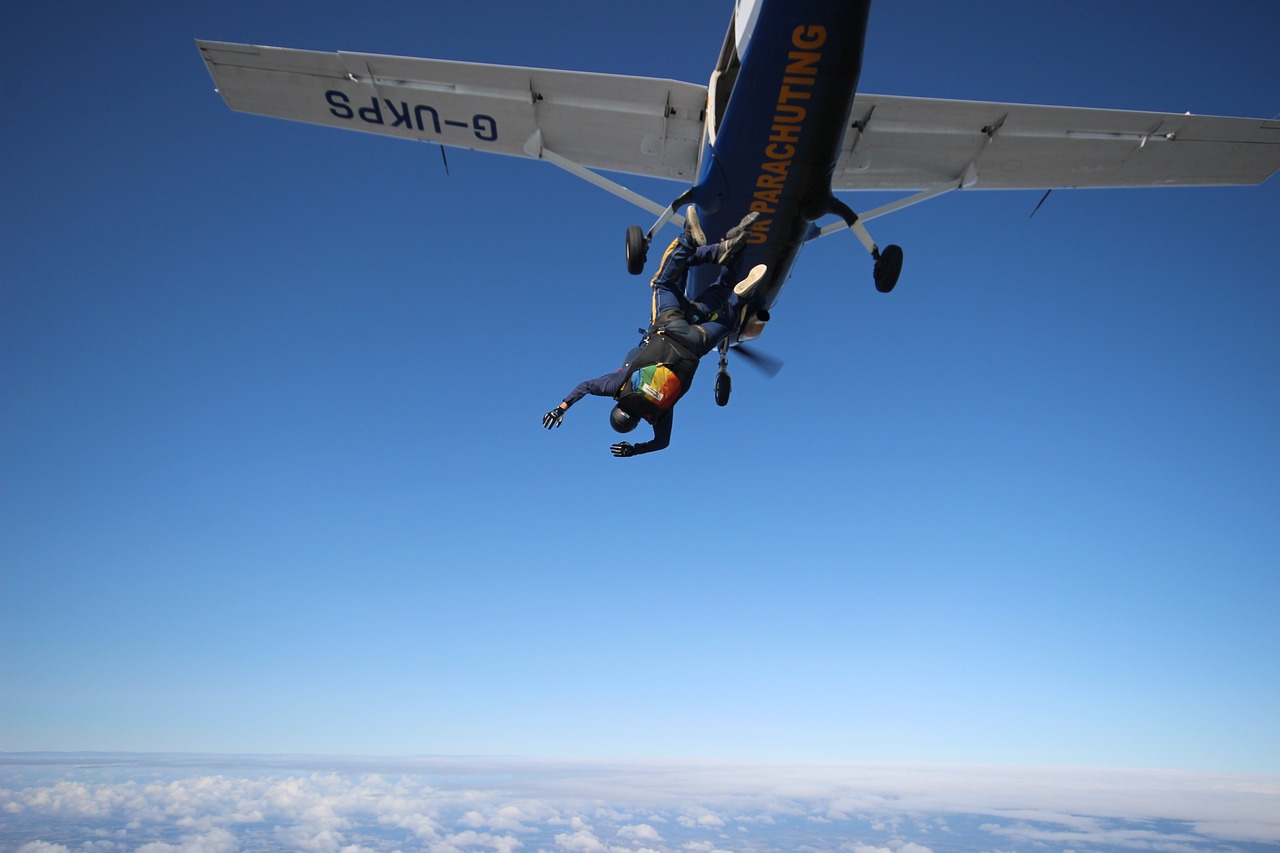
06 Nov Lifesaving Tech: Why Automatic Activation Devices Are Essential for Skydivers
Skydiving is an exhilarating sport that combines thrill and skill, where both physical readiness and safety equipment are critical. Among the various safety devices skydivers rely on, the Automatic Activation Device (AAD) is one of the most important. Designed to automatically deploy the reserve parachute if a skydiver hasn’t activated it by a certain altitude, the AAD serves as a safety net that can make all the difference in life-threatening situations. For anyone passionate about skydiving, understanding the importance of AADs and choosing the right rig, such as those provided by UPT’s Vector line, is key to a safer jump experience. Buy UPT Vector 3 Skydiving Rig here.
What is an Automatic Activation Device (AAD)?
An AAD is a small, high-tech device installed in a skydiver’s rig. It continuously measures altitude and descent speed, calculating whether the jumper should have activated their parachute by a certain point. If the device detects that the skydiver is still in freefall past a designated altitude, it automatically activates the reserve parachute, ensuring the jumper has a last line of defense in emergencies.
This feature is invaluable for both beginners and seasoned jumpers, providing backup when unexpected factors come into play. Experienced skydivers appreciate the AAD as a secondary safeguard, knowing that even with practiced skills, unforeseen situations can arise. Whether it’s due to a loss of consciousness, altitude misjudgment, or an issue with the main parachute, the AAD steps in when the unexpected occurs, adding a level of safety that can make a critical difference.
Why AADs Are a Must-Have for Skydivers
The value of an AAD is well recognized across the skydiving community. For new jumpers, an AAD can help offset any inexperience-related errors. While skydiving training emphasizes strong situational awareness, novice jumpers can become overwhelmed and lose track of altitude, especially during the excitement of the jump. For them, an AAD is a vital reassurance.
Advanced skydivers also rely on AADs, often as a safeguard during challenging dives or high-speed freefalls where precise timing is crucial. Even the most experienced skydivers can be affected by sudden physical issues, like hypoxia or loss of consciousness. In these scenarios, an AAD provides a last-resort safety net, adding a vital layer of security that can prevent a potentially disastrous situation.
UPT Vector Rigs: Merging Quality and Safety
When it comes to choosing a rig that accommodates an AAD, UPT Vector rigs are top of mind for many skydivers. These rigs, known for their high-quality materials and design, are crafted to integrate AAD systems seamlessly, providing a smooth and reliable deployment when needed. UPT’s Vector series stands out for its durability, comfort, and compatibility with modern AAD systems like the popular CYPRES and Vigil models.
Skydivers value Vector rigs because they offer both comfort and the peace of mind that safety devices like the AAD are properly installed and primed for activation if needed. UPT designs each Vector rig with attention to detail, ensuring that the AAD installation is optimized, with clear pathways and secure housing, so that the device can activate the reserve parachute effectively in an emergency. This kind of design consideration makes the Vector rigs a top choice for those who take both their thrill and their safety seriously.
How AADs Work During a Jump
The AAD’s job begins as soon as a jumper exits the plane. From that moment, the device continuously monitors the jumper’s altitude and rate of descent. Should a skydiver fail to deploy their main parachute or run into an issue with it, the AAD steps in when the jumper passes the preset activation altitude. For example, if the AAD is set to activate at 750 feet, it will trigger the reserve parachute at that height, even if the jumper hasn’t responded.
This fast, automated response is essential in situations where seconds matter. Many AADs allow skydivers to customize activation altitudes, depending on their jump style or specific safety needs. With features like these, AADs are designed to accommodate a variety of jumping experiences while keeping safety at the forefront.
AADs and Skydiving Regulations
Many skydiving drop zones around the world now require an AAD as standard equipment, especially for solo or high-altitude jumps. This requirement reflects a growing recognition of the safety benefits provided by AADs. In competitive settings, such as formation skydiving or swooping, AADs provide peace of mind for jumpers and organizers alike, knowing that an automatic backup is in place.
As more skydiving schools and clubs adopt AAD requirements, these devices have become not just a recommended piece of equipment but a respected safety standard. This trend underscores the importance of AADs in creating a safer environment for skydivers, ensuring that everyone from first-time jumpers to advanced enthusiasts can enjoy the sport with added security.
A Safety Feature Worth Every Penny
For any skydiver, investing in an AAD-equipped rig, like a UPT Vector, means choosing safety without compromising on quality or comfort. The AAD serves as an invisible yet invaluable companion, always ready to jump into action. While skydiving is an adrenaline-filled experience, it’s the knowledge that devices like the AAD are there to keep jumpers safe that lets them focus on the thrill of the dive.
From beginners to pros, anyone who steps out of a plane can feel more confident knowing that, in an emergency, their AAD will act as a final safeguard, allowing skydivers to enjoy their sport with that much more assurance.

No Comments